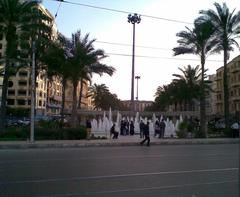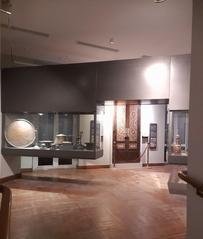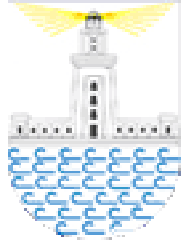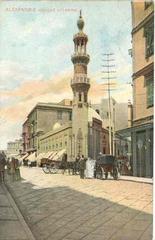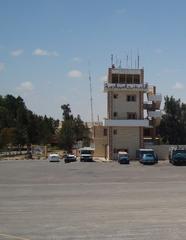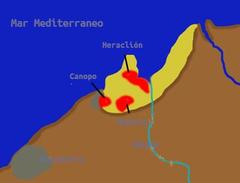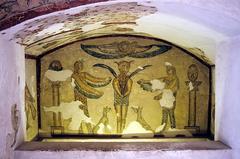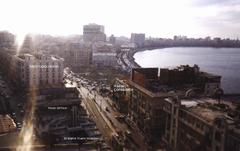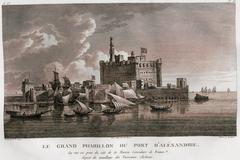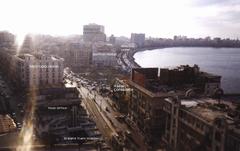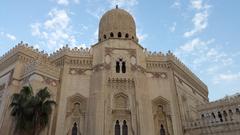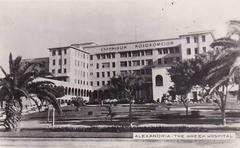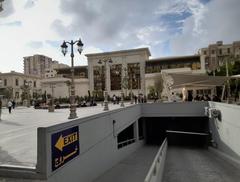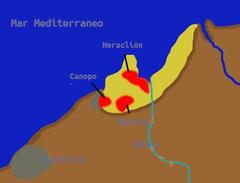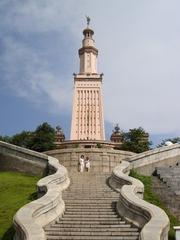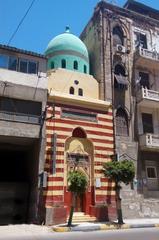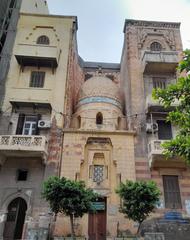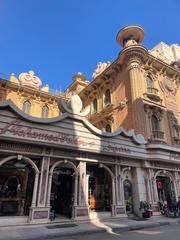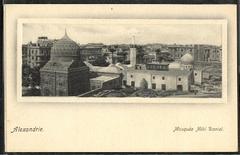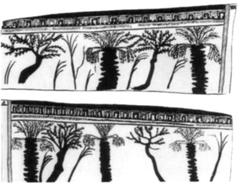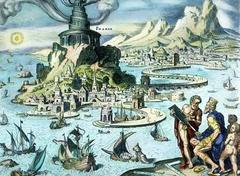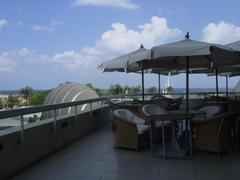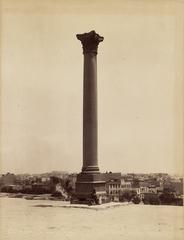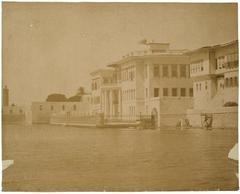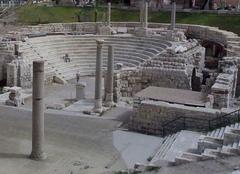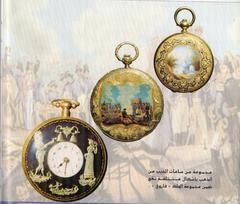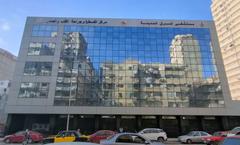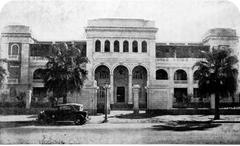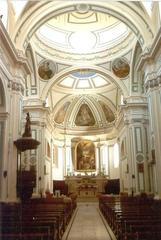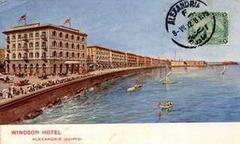Suez Canal Road Alexandria, Egypt: Visiting Hours, Tickets, and Attractions Guide
Date: 14/06/2025
Introduction: History and Significance of Suez Canal Road in Alexandria
The Suez Canal Road in Alexandria, Egypt, is a dynamic urban artery, deeply connected to the history and legacy of the Suez Canal—one of the world’s greatest engineering accomplishments. While the Suez Canal itself, completed in 1869, links the Mediterranean Sea to the Red Sea and transformed global maritime trade, Suez Canal Road serves as Alexandria’s main passage connecting its port, historic neighborhoods, and commercial districts. This route embodies Alexandria’s economic and cultural bonds to the canal, reinforcing its reputation as a prominent gateway between Egypt and the world (Britannica; Victorian Web).
The concept of uniting the Mediterranean and Red Seas dates back to ancient Egypt, with early canal attempts by Pharaoh Senusret III, eventually culminating in the modern Suez Canal under Ferdinand de Lesseps in the 19th century (Suez Canal Authority; World History Edu). Suez Canal Road reflects this grand heritage, facilitating commerce and travel while showcasing Alexandria’s evolving urban landscape through its markets, landmarks, and bustling life.
Visitors traveling along Suez Canal Road have convenient access to top attractions such as the Alexandria National Museum, Bibliotheca Alexandrina, and the historic Corniche. The road is well-served by public transportation and is close to notable historical sites like the Citadel of Qaitbay (Egypt Tours Plus; Travel Safe Abroad; UK Government Travel Advice).
This guide provides a comprehensive overview of Suez Canal Road, covering its history, practical visitor information, travel tips, accessibility, and nearby attractions. Whether you’re drawn by engineering marvels, urban culture, or Alexandria’s historical depth, this resource will help you maximize your experience along this iconic corridor.
Table of Contents
- Early Canal Concepts and Ancient History
- European Interest and Modern Construction
- Suez Canal: Construction and Impact
- Suez Canal Road and Alexandria’s Development
- Colonial Competition and International Importance
- Nationalization, Crisis, and Modernization
- Visiting the Suez Canal: Hours, Tickets, and Tips
- Alexandria and Surrounding Historical Sites
- Exploring Suez Canal Road: Visitor Guide & Tips
- Attractions Along Suez Canal Road
- Visiting the Citadel of Qaitbay: History, Tickets & Tips
- Practical Visitor Advice: Safety, Transportation, Accessibility
- FAQs
- References
Early Canal Concepts and Ancient History
The dream of linking the Mediterranean and Red Seas goes back to ancient times. Pharaoh Senusret III (c. 1874 BCE) attempted the first canal, using the Nile’s branches to enable trade and military movement. The canal was revived and abandoned multiple times, including during the Islamic conquest when it operated for about 150 years (Suez Canal Authority).
European Interest and Modern Construction
By the 19th century, European powers saw immense strategic and commercial value in a direct waterway. Alexandria flourished as a cosmopolitan center, serving travelers and merchants heading to or from the Suez region (Victorian Web). Under Khedive Ismail, the city’s infrastructure, including Suez Canal Road, was modernized to support increasing trade and tourism (Egypt Tourz).
Suez Canal: Construction and Impact
In 1854, Said Pasha granted Ferdinand de Lesseps the concession to build the Suez Canal. Work began in 1859, and the canal was opened in 1869 after overcoming significant engineering, financial, and labor challenges (Me Observer; World History Edu). The canal quickly became a global trade artery, dramatically reducing travel time between Europe and Asia.
Suez Canal Road and Alexandria’s Development
Suez Canal Road became a critical route connecting Alexandria’s port to national highways and the canal zone, supporting both commerce and tourism. Victorian hotels and European-style amenities proliferated, establishing Alexandria as a fashionable destination and a vital transport hub (Victorian Web). The road facilitated efficient movement of goods, services, and people, anchoring the city’s economic growth (Egypt Tourz).
Colonial Competition and International Importance
The Suez Canal’s immense value led to international rivalries. The British acquired controlling shares in 1875, turning the canal into a keystone of imperial strategy. The 1888 Constantinople Convention guaranteed free and neutral passage, further elevating its global significance (World History Edu; Me Observer).
Nationalization, Crisis, and Modernization
President Nasser’s nationalization of the canal in 1956 triggered the Suez Crisis and subsequent military intervention. International pressure restored Egyptian control later that year. The canal was again closed from 1967–1975 due to conflict, before reopening under President Sadat (On This Day; Suez Canal Authority). Each phase brought further modernization and reconstruction.
Visiting the Suez Canal: Hours, Tickets, and Tips
- Visiting Hours: Most visitor centers and museums operate 9:00 AM–5:00 PM; confirm local schedules.
- Tickets: Canal boat tours and museum entries range from $20–$50; book in advance during peak season.
- Accessibility: Most sites are accessible, but check facilities ahead of time.
- Travel Tips: Bring sun protection, stay hydrated, and consider guided tours for deeper insight.
- Photography: Popular spots include engineering landmarks in Ismailia, and panoramic views from Suez Canal Road.
Alexandria and Surrounding Historical Sites
Alexandria is a gateway to Egypt’s historical treasures, including the Bibliotheca Alexandrina, Qaitbay Citadel, and the Roman Amphitheatre. These attractions offer an immersive blend of ancient, medieval, and modern heritage.
Exploring Suez Canal Road: Visitor Guide & Tips
Urban Development and Modern Experience
Suez Canal Road is a vital urban thoroughfare, developed to support Alexandria’s modernization and its role as Egypt’s principal Mediterranean port. It connects the port with national highways and has spurred extensive residential, commercial, and industrial growth.
Visitor Information
- Access: Suez Canal Road is open 24/7 with no entrance fee. Nearby attractions may have ticket requirements.
- Key Sites: Alexandria National Museum (open daily 9 AM–5 PM, ~60–70 EGP), Bibliotheca Alexandrina (varied hours, ~70 EGP), Corniche, and port viewpoints.
- Tours: Local operators offer guided walks and history tours—book in advance.
- Accessibility: Most main sites are wheelchair accessible; some older buildings may have limitations.
Economic and Strategic Role
Suez Canal Road is essential for logistics, supporting industries from petrochemicals to agriculture. During events like the 2024 Houthi attacks, the road enabled critical alternative logistics for Alexandria’s port (Atlas IMS).
Urban and Cultural Experience
The road offers a cross-section of Alexandrian life, with vibrant markets, local eateries, and a multicultural atmosphere. Authentic Egyptian cuisine is readily available, and the port area is a hub of activity (Egypt Tours Plus).
Transportation
- Public Transport: Buses, microbuses, and taxis serve the route; ride-hailing apps are also available.
- Private Vehicles: Parking can be limited near major attractions.
- Walking/Cycling: Possible in certain areas; exercise caution due to traffic.
Safety and Etiquette
- General Safety: The area is generally safe, but remain aware in crowded zones and after dark.
- Dress Code: Modest clothing is advised, especially near religious sites.
- Photography: Avoid photographing military or port installations.
- Weather: October–April is ideal for visiting.
Attractions Along Suez Canal Road
Alexandria National Museum
- Hours: Daily, 9 AM–5 PM
- Tickets: ~70 EGP for foreigners
- Highlights: Exhibits from Pharaonic, Greco-Roman, Christian, Islamic, and modern periods
- Accessibility: Wheelchair accessible
The Corniche
A scenic waterfront boulevard with cafes, restaurants, and panoramic Mediterranean views.
Bibliotheca Alexandrina
- Hours: Sun–Thu 9 AM–7 PM; Fri 1 PM–7 PM; closed Sat
- Tickets: ~70 EGP; additional for special exhibitions
- Accessibility: Fully accessible
Markets and Local Life
Street markets and souks offer fresh produce, seafood, textiles, and crafts. Local cafes provide authentic Egyptian dishes.
Nearby Parks
Canal Gardens, just off Suez Canal Road, offer a tranquil escape with greenery and walking paths.
Religious Sites
Nearby mosques and churches, such as the Attarine Mosque and St. Mark’s Church, reflect Alexandria’s rich spiritual tapestry.
Visiting the Citadel of Qaitbay: History, Tickets & Tips
Overview
The Citadel of Qaitbay, built between 1477–1479, stands on the site of the ancient Lighthouse of Alexandria. It exemplifies medieval military architecture and offers sweeping sea views.
Hours and Tickets
- Open: Daily, 9 AM–5 PM
- Tickets: ~60 EGP for foreigners, 20 EGP for Egyptians; children under 6 free
- Guided Tours: Available; book in advance
Getting There
Accessible by taxi, ride-hailing apps, or public transport. Parking is available but limited during peak times.
Practical Tips
- Dress modestly
- Carry bottled water and sanitizer
- Cash is preferred for small purchases
- The site has uneven surfaces; limited accessibility for those with mobility challenges
Food and Dining
Seafood restaurants and street food stalls are plentiful along the Corniche near the Citadel.
Practical Visitor Advice
- Safety: Increased police presence near major sites; take standard precautions.
- Health: Drink bottled water; use hand sanitizer.
- Money: Local currency is Egyptian Pound (EGP); cash is common.
- Connectivity: Wi-Fi is available in most hotels and cafes; local SIM cards recommended.
- Emergency Numbers: Police 122, Ambulance 123, Tourist Police 126
Frequently Asked Questions (FAQs)
Q: Is Suez Canal Road free to access?
A: Yes, it is a public roadway.
Q: Are the main attractions wheelchair accessible?
A: Most are, especially the National Museum and Bibliotheca Alexandrina.
Q: What transport options exist along Suez Canal Road?
A: Buses, microbuses, taxis, ride-hailing, and private vehicles.
Q: What is the best time to visit?
A: October–April for cooler, pleasant weather.
Q: Are English-speaking guides available?
A: Yes, at most major attractions and through tour operators.
Summary and Final Travel Tips
Suez Canal Road is more than a transportation route; it is a living emblem of Egypt’s ingenuity, economic strength, and diverse culture. The road’s historical roots in the Suez Canal’s legacy are reflected in Alexandria’s thriving urban life, rich heritage sites, and bustling markets. Understanding visitor logistics—hours, ticketing, accessibility—ensures a smooth experience, while guided tours and local insights deepen your appreciation of Alexandria’s role in global history (Suez Canal Authority; Britannica; Victorian Web; Egypt Tours Plus).
For optimal planning, use resources such as the Audiala app for real-time updates and exclusive tours. Stay safe, respect local customs, and immerse yourself in the city’s vibrant tapestry—Suez Canal Road is an essential chapter in any journey through Alexandria and Egypt’s enduring heritage (World History Edu; Egypt Tourz; Travel Safe Abroad).
References
- Suez Canal Authority, 2024
- Victorian Web, 2024
- Me Observer, 2015
- World History Edu, 2024
- Egypt Tourz, 2024
- Britannica, 2024
- Egypt Tours Plus, 2024
- Travel Safe Abroad, 2024
- UK Government Travel Advice, 2024
- Egypt Tours Portal, 2024
- Atlas IMS, 2025

